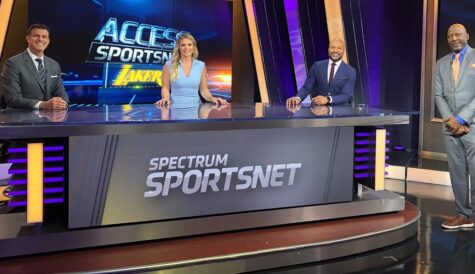
After more than 40 years of operation, DTVE is closing its doors and our website will no longer be updated daily. Thank you for all of your support.
Pay TV feels the pressure
 Pay TV operators must not be complacent about new threats to their business model, writes Kate Bulkley. The future could be sooner than we think.
Pay TV operators must not be complacent about new threats to their business model, writes Kate Bulkley. The future could be sooner than we think.
In the world of pay TV operators – both cable and satellite – there has always been uncertainty about the future. What will the audience want? How much will they pay? Will the technology move fast enough and the delivery pipes be big enough and the offers be attractive enough?
The difference today, however, is the scale of change the business faces. The traditional pay TV business of mostly linear channels, delivered on a single platform, must be transformed into a business that delivers all kinds of different content over a variety of platforms and to a number of devices, many of which the pay TV operator doesn’t even control.
This challenge is being driven by us, the consumers, on the back of ever-more powerful broadband coupled with disruptive offers from the likes of Apple iTunes, Netflix, Hulu, Amazon and Google. Increasingly we consumers, armed with devices from smartphones to tablets (and let’s be honest, that really means the iPad) are demanding something different. We want it more personal, more on-demand and more social.
The clarion call seems to be around customisation, immediacy and ubiquity. At the same time the economic climate is forcing consumers to question how much they will spend on entertainment. So when BSkyB’s annual TV product gross addition rate slowed in the Christmas quarter of 2011 – the first year ever that the Christmas quarter has failed to deliver the highest quarterly additions – analysts took note.
A better set-top box is one way to hit back. In the UK Virgin Media’s Tivo box has catch-up VOD, the capability for over-the-top services and a huge DVR to record stuff and it seems to be working; the number of Tivo subscribers doubled in the final quarter of 2011 to 435,000, or 12% of the Virgin Media subscriber base in just six months. Virgin Media subscribers like VOD – Virgin claims over 90 million VOD views a month . App services that are particularly popular include BBC iPlayer and Spotify. But as consumers increasingly embrace the world of apps, Virgin could be seen to be dragging its feet in its “open platform” marketing line, with only 15 apps available on its set-top, compared with the hundreds that are available on connected TVs from the likes of Samsung.
It’s true that today, Netflix and Lovefilm don’t have the amount of premium content that a pay TV operator like BSkyB controls – but that will almost certainly change, and relatively quickly given the aspirations of both Netflix and Lovefilm’s owner Amazon to grow their businesses. In addition, Netflix has already commissioned original content and in the UK it is offering licensing deals to programme producers that are equivalent to what a cable channel would offer for second pay window rights.
Meanwhile, UK regulators, like others in Europe, are looking at forcing the unbundling of subscription VOD rights by traditional operators including BSkyB. In this context, BSkyB’s launch of its own OTT product in April could not come soon enough. The product will essentially be an internet movie service and offer a standalone fee for access to Sky Movies over the web when it launches, and eventually could sell sports and other content. A Sky OTT subscriber will not require a satellite dish or even a subscription to Sky.
It’s only just begun, but there is going to be a big fight among traditional pay TV and OTT providers both for content rights and around pricing. In the UK, Netflix is offering its service for £5.99 a month. Lovefilm countered with a £4.99 offering while Sky was still thinking about its price at the time of writing. For Sky there is a question mark over cannibalisation of its own premium packages but maybe it’s better to keep a subscriber to something than lose him entirely.
Sky isn’t the only pay TV operator to take the OTT plunge. One of the most comprehensive was launched early last year by Modern Times Group in Scandinavia where broadband connections and speeds are amongst the highest in the world. Viaplay’s most popular package costs SEK199 (?23) per month. Within two months of launch, MTG reported that it already had almost 30,000 subscribers and this number has continued to grow. It is like Sky in that there is no need for an MTG satellite dish or subscription and it is available on any internet-connected device. It includes top sport like live Champions League games, as well as an extensive list of on-demand movies and TV shows from US and independent studios.
So how does the future of the traditional pay TV operator look? The product mix will widen to embrace broadband, mobile, OTT and whatever else the operators can serve up. Certainly purchase of a big WiFi provider is bolstering its own moves into supplying broadband, much as cable operators including Virgin Media already do. And then there is OTT and multiple devices and access to your subscription on the go, all becoming more important to the total mix.
Kate Bulkley is a broadcaster and writer specialising in media and telecommunications. [email protected].


